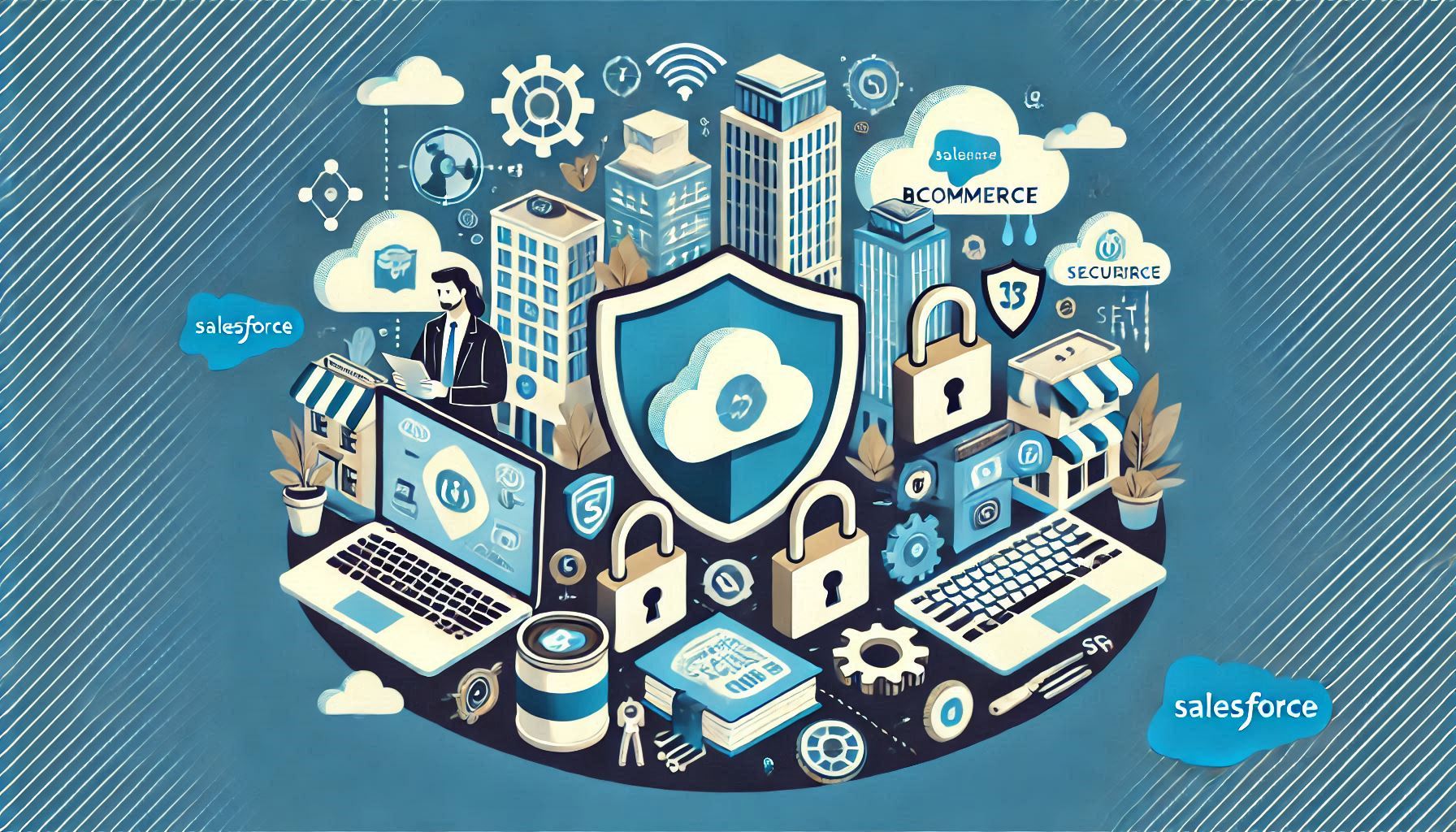In today’s digital age, safeguarding your Salesforce B2B Commerce platform is critical to protecting sensitive business data, maintaining customer trust, and ensuring uninterrupted operations. This guide will walk you through the best practices for securing your Salesforce B2B Commerce implementation. We will cover essential security measures such as Multifactor Authentication (MFA), preventing third-party attacks, configuring sharing settings, and setting private product access.
1. Setting Up Multifactor Authentication (MFA)
Multifactor Authentication (MFA) is a robust security measure that adds an additional verification step to protect user accounts. By requiring more than just a username and password, MFA helps prevent unauthorized access caused by phishing, credential theft, or account takeovers.
Steps to Enable MFA:
- Navigate to MFA Settings:
Go toSetup > Quick Find > Multi-Factor Authenticationin your Salesforce admin panel. - Activate MFA for Users:
Enable MFA for all users to comply with Salesforce’s security requirements. - Choose Authentication Methods:
Select methods like the Salesforce Authenticator app, third-party TOTP apps (e.g., Google Authenticator), or physical security keys. - Test MFA Implementation:
Use a sandbox environment to ensure the setup works correctly before rolling it out in production.
Pro Tip: Require MFA for accessing sensitive features, such as reports or connected applications, to add an extra layer of protection.
2. Preventing Third-Party Attacks
Third-party integrations are a common feature of eCommerce platforms, but they can introduce vulnerabilities. Salesforce provides built-in tools to mitigate these risks, ensuring your platform remains secure.
Steps to Enhance Security:
- Enable the HttpOnly Attribute for Session Cookies:
- Navigate to
Setup > Quick Find > Session Settings. - Enable the “Require HttpOnly” checkbox to restrict JavaScript from accessing session cookies.
- Save your changes.
- Navigate to
Why This Matters:
- Prevents attackers from hijacking user sessions.
- Mitigates cross-site scripting (XSS) vulnerabilities.
- Strengthens the overall security of your Salesforce organization.
3. Configuring Sharing Settings
Properly configuring sharing settings ensures that only authorized users have access to specific data within your Salesforce org. This is especially important in commerce environments where sensitive information, such as pricing and order details, is stored.
Steps to Configure Sharing Settings:
- Navigate to Sharing Settings:
Go toSetup > Quick Find > Sharing Settings. - Set Default Access Levels for Objects:
- Products: Set to “Private” for external access.
- Buyer Groups, Orders, and Catalogs: Configure as “Private” or “Controlled by Parent,” depending on your use case.
- Define External and Internal Access Separately: Use sharing rules to assign appropriate access levels to internal users and external buyers.
Best Practice: Always keep external access to sensitive objects like Products and Buyer Groups private. Grant specific permissions only through custom sharing rules.
4. Importance of Private Product Access Settings
The product catalog is a cornerstone of your eCommerce platform. Improper security settings can expose sensitive data to unauthorized users, including competitors and malicious actors.
Why Private Access Matters:
- Prevents Unauthorized Access: Ensures only authenticated buyers can view product details.
- Protects Business Strategies: Secures sensitive data such as pricing and inventory.
- Improves User Experience: Shows only relevant products to buyers, reducing confusion.
Steps to Set Private Product Access:
- Default External Access:
- Go to
Setup > Quick Find > Sharing Settings. - Set Products to “Private” for default external access.
- Go to
- Grant Access Through Permission Sets:
- Use permission sets for roles like buyers and buyer managers to define what each role can view or edit.
- Avoid Profile-Level Access:
- Assign access via permission sets to maintain flexibility and security.
Important Note: If Default External Access is not set to “Private,” authenticated users could potentially query all product data using SOQL, bypassing entitlement controls.
Why Prioritize Security in Salesforce B2B Commerce?
Implementing these security best practices ensures that your platform is secure and reliable. Here’s why it matters:
- Protect Sensitive Data: Safeguard customer information, pricing details, and business operations.
- Prevent Unauthorized Access: Minimize risks of data breaches and ensure compliance with security standards.
- Build Customer Trust: Demonstrate your commitment to protecting customer data and maintaining a secure platform.
Securing your Salesforce B2B Commerce platform is not a one-time task; it requires continuous monitoring and updates. Regularly review your security settings, stay informed about new threats, and adapt your practices to maintain compliance with industry standards. By following these best practices, you can create a safe, scalable, and trustworthy eCommerce environment that meets the needs of your business and customers.
Start implementing these steps today to fortify your Salesforce B2B Commerce platform against potential threats and vulnerabilities.
